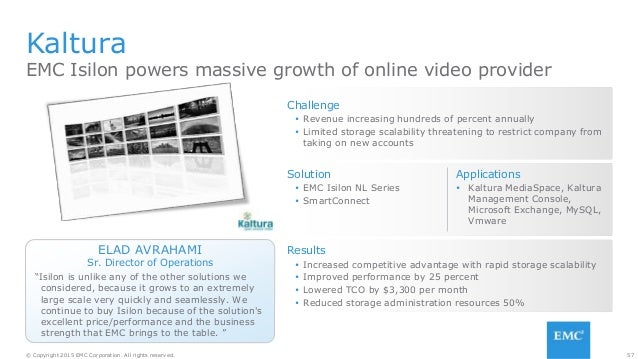Kaltura Vm Image

- Installing Kaltura on a Single Server (RPM) This guide describes RPM installation of an all-in-one Kaltura server and applies to all major RH based Linux distros including Fedora Core, RHEL, CentOS, etc. (Note the supported distros and versions).Kaltura Inc. Also provides commercial solutions and services including pro-active platform monitoring, applications, SLA, 24/7 support.
- But there is which has a similar range of VM images,.
KVM, QEMU start or stop virtual machine from command line (CLI) Written by Guillermo Garron Date: 2013-02-11 16:59:13 00:00. KVM or Kernel Based Virtual Machine is a popular virtualization technology. It allows you to run virtual guest machines over a host machine.
NoteThis article has been updated to use the new Azure PowerShell Azmodule. You can still use the AzureRM module, which will continue to receive bug fixes until at least December 2020.To learn more about the new Az module and AzureRM compatibility, see. ForAz module installation instructions, see. Generalize the Windows VM using SysprepSysprep removes all your personal account and security information, and then prepares the machine to be used as an image. For information about Sysprep, see.Make sure the server roles running on the machine are supported by Sysprep.
For more information, see. ImportantAfter you have run Sysprep on a VM, that VM is considered generalized and cannot be restarted. The process of generalizing a VM is not reversible. If you need to keep the original VM functioning, you should create a and generalize its copy.If you plan to run Sysprep before uploading your virtual hard disk (VHD) to Azure for the first time, make sure you have.To generalize your Windows VM, follow these steps:.Sign in to your Windows VM.Open a Command Prompt window as an administrator. Change the directory to%windir%system32sysprep, and then run sysprep.exe.In the System Preparation Tool dialog box, select Enter System Out-of-Box Experience (OOBE) and select the Generalize check box.For Shutdown Options, select Shutdown.Select OK.When Sysprep completes, it shuts down the VM. NoteThis article has been updated to use the new Azure PowerShell Azmodule.
You can still use the AzureRM module, which will continue to receive bug fixes until at least December 2020.To learn more about the new Az module and AzureRM compatibility, see. ForAz module installation instructions, see.Creating an image directly from the VM ensures that the image includes all of the disks associated with the VM, including the OS disk and any data disks. This example shows how to create a managed image from a VM that uses managed disks.Before you begin, make sure that you have the latest version of the Azure PowerShell module. To find the version, run Get-Module -ListAvailable Az in PowerShell. If you need to upgrade, see. If you are running PowerShell locally, run Connect-AzAccount to create a connection with Azure.

NoteIf you would like to store your image in zone-redundant storage, you need to create it in a region that supports and include the -ZoneResilient parameter in the image configuration ( New-AzImageConfig command).To create a VM image, follow these steps:.Create some variables. $vmName = 'myVM'$rgName = 'myResourceGroup'$location = 'EastUS'$imageName = 'myImage'.Make sure the VM has been deallocated. Stop-AzVM -ResourceGroupName $rgName -Name $vmName -Force.Set the status of the virtual machine to Generalized. Set-AzVm -ResourceGroupName $rgName -Name $vmName -Generalized.Get the virtual machine.
$vm = Get-AzVM -Name $vmName -ResourceGroupName $rgName.Create the image configuration. $image = New-AzImageConfig -Location $location -SourceVirtualMachineId $vm.Id.Create the image. New-AzImage -Image $image -ImageName $imageName -ResourceGroupName $rgNameCreate an image from a managed disk using PowerShellIf you want to create an image of only the OS disk, specify the managed disk ID as the OS disk:.Create some variables. $vmName = 'myVM'$rgName = 'myResourceGroup'$location = 'EastUS'$imageName = 'myImage'.Get the VM. $vm = Get-AzVm -Name $vmName -ResourceGroupName $rgName.Get the ID of the managed disk. $diskID = $vm.StorageProfile.OsDisk.ManagedDisk.Id.Create the image configuration.
Gamehouse gratis untuk laptop skins. $imageConfig = New-AzImageConfig -Location $location$imageConfig = Set-AzImageOsDisk -Image $imageConfig -OsState Generalized -OsType Windows -ManagedDiskId $diskID.Create the image. New-AzImage -ImageName $imageName -ResourceGroupName $rgName -Image $imageConfigCreate an image from a snapshot using PowershellYou can create a managed image from a snapshot of a generalized VM by following these steps:.Create some variables. $rgName = 'myResourceGroup'$location = 'EastUS'$snapshotName = 'mySnapshot'$imageName = 'myImage'.Get the snapshot. $snapshot = Get-AzSnapshot -ResourceGroupName $rgName -SnapshotName $snapshotName.Create the image configuration.
$imageConfig = New-AzImageConfig -Location $location$imageConfig = Set-AzImageOsDisk -Image $imageConfig -OsState Generalized -OsType Windows -SnapshotId $snapshot.Id.Create the image. New-AzImage -ImageName $imageName -ResourceGroupName $rgName -Image $imageConfigCreate an image from a VM that uses a storage accountTo create a managed image from a VM that doesn't use managed disks, you need the URI of the OS VHD in the storage account, in the following format: mystorageaccount.blob.core.windows.net/ vhdcontainer/ vhdfilename.vhd. In this example, the VHD is in mystorageaccount, in a container named vhdcontainer, and the VHD filename is vhdfilename.vhd.Create some variables.
Kaltura Ott
$vmName = 'myVM'$rgName = 'myResourceGroup'$location = 'EastUS'$imageName = 'myImage'$osVhdUri = 'the VM. Stop-AzVM -ResourceGroupName $rgName -Name $vmName -Force.Mark the VM as generalized. Set-AzVm -ResourceGroupName $rgName -Name $vmName -Generalized.Create the image by using your generalized OS VHD. $imageConfig = New-AzImageConfig -Location $location$imageConfig = Set-AzImageOsDisk -Image $imageConfig -OsType Windows -OsState Generalized -BlobUri $osVhdUri$image = New-AzImage -ImageName $imageName -ResourceGroupName $rgName -Image $imageConfigNext steps.Feedback.